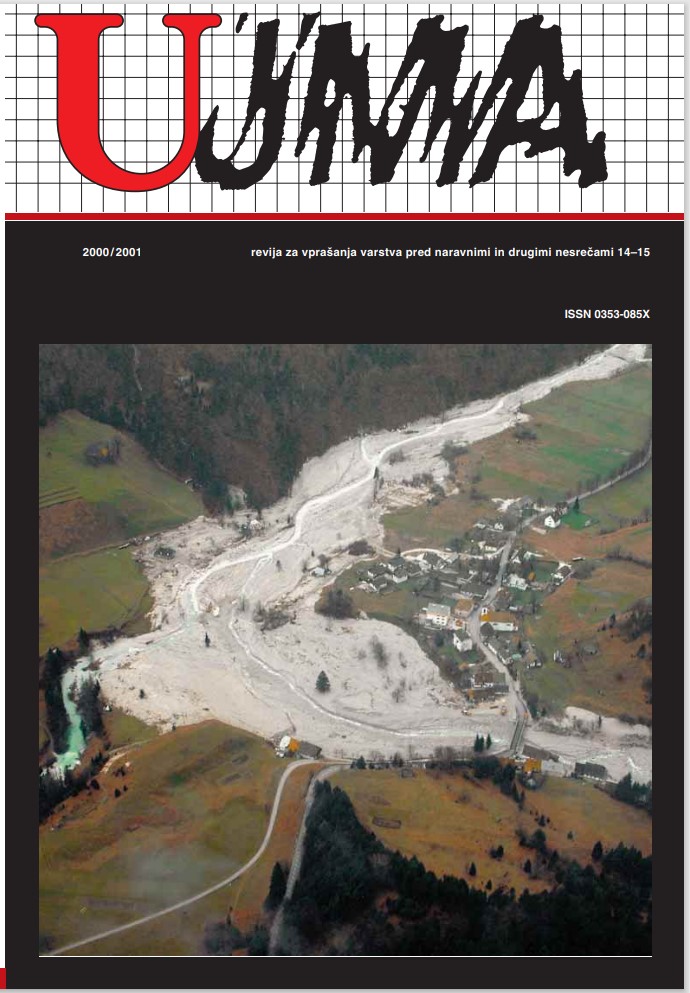EUROPEAN UNION SYSTEMS FOR CIVIL PROTECTION, ACCIDENTAL MARINE POLLUTION AND HUMANITARIAN AID
Abstract
The main purpose of European Union’s civil protection system is to help ensure better protection for people, the environment and property in the event of natural and technological disasters. All civil protection initiatives on the Community level are implemented on the basis of the subsidiarity principle. This means that Community structures do not assume member state activities in the field of civil protection, but support them and provide a framework for effective and rapid cooperation between national civil protection services when mutual assistance is needed. For the purpose of the latter, the European Commission has established several operational instruments: a Permanent Network of National Correspondents, an Operational Manual of Civil Protection in the European Union, the Secondment of experts and the 24h/24h Operational Structure. The purpose of the accidental marine pollution system is to support member state efforts to improve their capabilities for response in case of major pollution from off-shore installations and spills from vessels. With the Community information system, the Operational Manual, the Urgent Pollution Alert Section and the Community Task Force for Combating Accidental Pollution at Sea, the system also creates the necessary conditions for effective mutual assistance and cooperation. The European Community Humanitarian Office provides emergency assistance and relief to the victims of natural disasters or armed conflicts outside the European Union. Since its creation in 1992 and up to the year 2000, the Office has successfully managed more than 5 bilion EUROs and is one of the world’s largest humanitarian aid donors. The European Commission have assessed that current civil protection and accidental marine pollution systems have a very light structure, lack the capacity to mobilise significant and sufficient resources from member states, and are unable to meet real needs for the improved coordination of interventions by member state teams. The Commission has proposed the establishment of improved mechanisms for coordinating interventions in the event of emergencies inside and outside the Union. Its proposal includes the preidentification of intervention resources, the improvement of training programmes, the establishment of assessment and coordination teams, and the creation of a common emergency communication system. It also foresee that interventions outside the Union would be carried out in cooperation with the European Community Humanitarian Office to ensure a smooth transition to the phase in which the latter can provide humanitarian assistance.
References
Malešič M., 1991. Evropski družbi naproti: civilna zaščita. Ujma, št 5, str. 246–248.
Proposal for a Council Decision Establishing a Community mechanism for the coordination of Civil Protection intervention in the event of emergencies, 27. 9. 2000; Evropska komisija: http://europa.eu.int/eur-lex/en/com /pdf/2000/en_500 PC0593 .pdf (17. 3. 2001).
Resolucija in odoločitve Sveta Evropske unije iz leta 1978, 1981 in 2000 ter odločitve Evropske komisije iz leta 1980 in 1987, ki zadevajo upravljanje z onesnaženji morja; dostopne na uradni spletni strani Evropske unije.
Resolucije Sveta Evropske unije iz leta 1987, 1989, 1990, 1991, 1994 in 1999, ki zadevajo področje civilne zaščite; dostopne na uradni spletni strani Evropske unije.
Uradna spletna stran civilne zaščite v Evropski Uniji: http://europa.eu.int/comm/environment/civil/ (15. 2. 2001).
Uradna spletna stran ECHO: http://europa.eu.int/comm/echo/en/index_en.html, (17. 3. 2001).
Uradna spletna stran Evropske unije: http://europa.eu.int/index_en.htm, (15. 2. 2001).
Vademecum of civil protection in the European Union, 1999; Evropska komisija: http://europa.eu.int/comm/environment/civil/pdfdocs/vademec.pdf (15. 2. 2001)
Downloads
Published
Issue
Section
License

This work is licensed under a Creative Commons Attribution-NonCommercial-NoDerivatives 4.0 International License.
The articles are made available to the public under Creative Commons Attribution-NonCommercial-NoDerivatives 4.0 International (CC BY-NC-ND 4.0).


